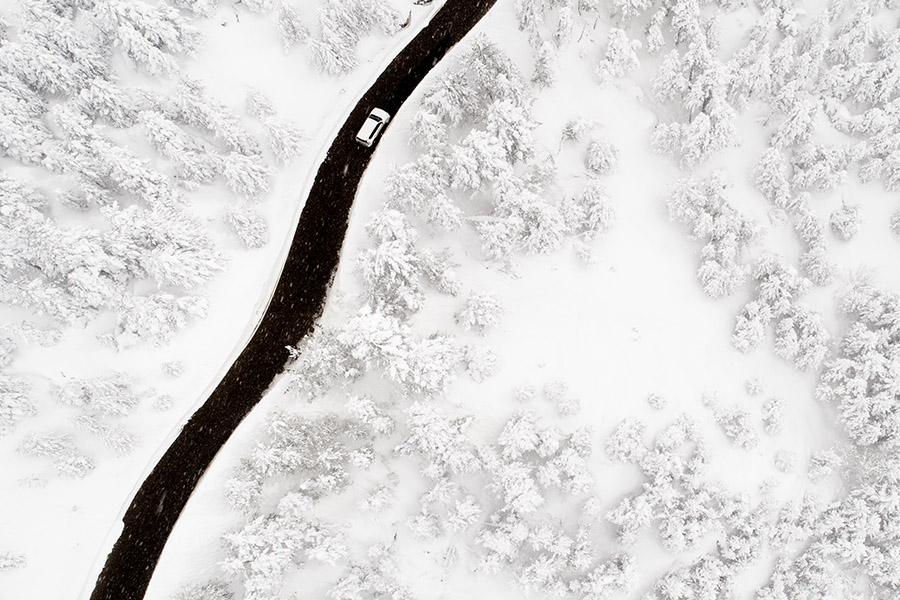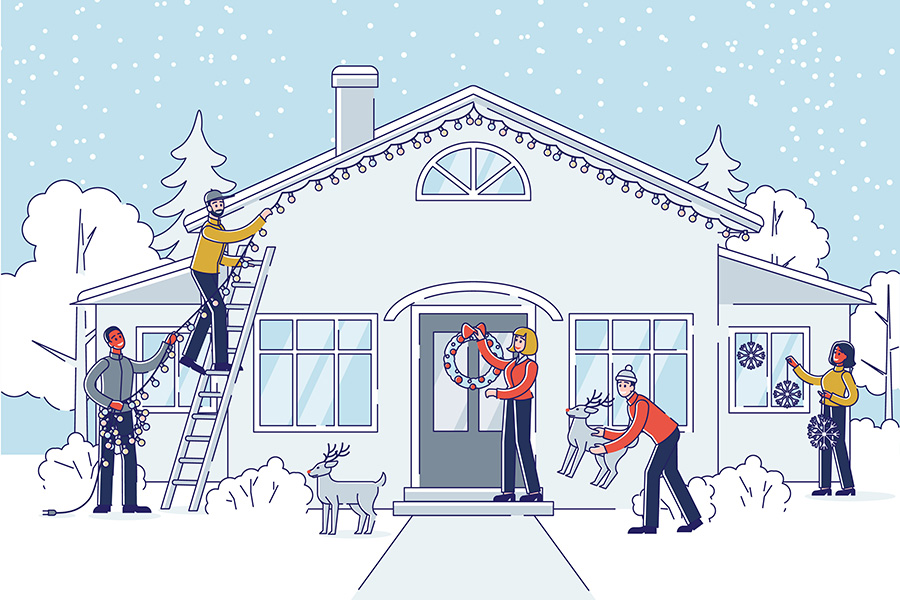Driving in the Snow

Driving can be challenging even for the most seasoned drivers when snow and ice are involved. Although you should only get on the road when absolutely necessary, you can safely drive in winter weather with proper preparation and extreme caution behind the wheel.
TIPS FOR DRIVING IN THE SNOW
If you’re driving in wintry conditions for the first time, or just need a refresher, here’s how to safely drive in the snow and ice.
BEFORE YOU HIT THE ROAD
Winterize Your Car
You can do several things to winterize your car for maximum winter driving. Inspecting your tires is one of the best ways to ensure your car is ready for winter. Your tires need plenty of traction to help you stay on the road safely, so consider taking your car to a mechanic who will tell you whether your tires are okay or need replacement. If you need new tires, consider switching to winter tires specifically designed for the snow.
Remove Snow and Ice
To ensure you drive safely on winter roads, remove any snow and ice from your vehicle so you have an unobstructed view in all directions. Before clearing your windows, start your car and set the airflow to defrost with the maximum fan speed and temperature. Then, use a scraper or brush to remove snow and ice from the roof, trunk lid, hood, and all the windows. Once the inside and outside of your windows are fully defrosted, you can put your car into drive and hit the road.
If something goes wrong while driving on winter roads, you want to ensure you’re prepared to handle the situation. Here are some essential items you should have in your emergency preparedness kit:
- Jumper cables
- Flashlight and batteries
- Ice scraper
- Non-perishable food
- Water
- Extra coolant
- Road flares
- First aid kit
- Gloves
- Tire inflator
- Tire pressure gauge
- Tire patch kit
- Triangle reflector kit
Decrease Speed
You need to drive slower than normal to account for the poorer traction. As your tire treads sink into the snow, they grip the surface and offer stability, but you must wait a moment for the snow to be compressed enough to allow this to happen. Also, you must remember to gently press down on the brakes and accelerator to prevent your tires from sliding. Driving slower may take longer to reach your destination, but avoiding an accident is worth it.
Use AWD or 4WD
If your car is equipped with all-wheel drive (AWD) or four-wheel drive (4WD), using these systems can help you navigate through wintry road conditions. AWD is for good driving in moderate snowy conditions, while 4WD is better for driving in extreme snow and ice. However, these systems shouldn’t be a substitute for safe driving just because they provide some extra traction. Driving slowly and being aware of your surroundings is still the most important thing you can do while driving in the snow.
Leave Extra Distance Between You and Other Cars
Leaving five to six seconds of distance between you and other cars is one of the best ways to help you avoid an accident while driving in the snow. If something happens to the car in front of you, you’ll need plenty of time to stop safely. Driving slowly helps, but it may not be enough if you’re not driving at a safe distance.
Respect Snowplows
It’s best to keep a safe distance from plows on the road. If you drive next to one on the highway, the snow that flies off the side of the plow can hit your windshield, making it hard to see what’s ahead of you.
Don’t Use Cruise Control
Don’t use cruise control when driving in wintry conditions. If you put on cruise control, the system might not react as quickly if you feel a loss in traction.
Be on the Lookout for Black Ice
Black ice is when the pavement looks wet but is actually covered in ice. Be especially careful of black ice if you have to drive at night. During the day, snow and ice may thaw, but once the sun goes down, that water may refreeze and turn into ice.
Conclusion
Driving in snow for the first time is not easy, let alone for someone with years of experience. Just remember to go slow, especially while turning. Give plenty of space to cars around you, gently push your brakes and start early. Allow yourself enough time to get from point A to point B safely, even if it means leaving a little bit earlier. Also, ensure you properly handle your vehicle in rough conditions.
Accidents still happen, though. That’s why you should have reliable car insurance to help protect you and your vehicle following an accident.
To learn more about insurance options from the Insurance Agency at AAA South Jersey, visit AAA.com/Insurance or call 1-855-282-2275
Source: https://www.mercuryinsurance.com/






